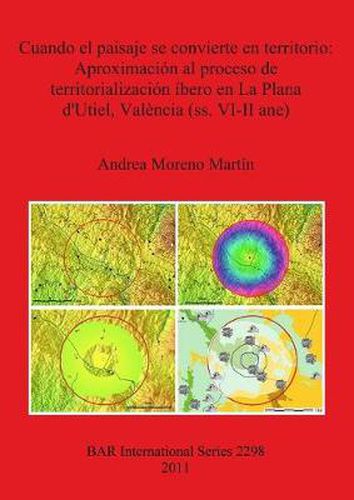Readings Newsletter
Become a Readings Member to make your shopping experience even easier.
Sign in or sign up for free!
You’re not far away from qualifying for FREE standard shipping within Australia
You’ve qualified for FREE standard shipping within Australia
The cart is loading…






This title is printed to order. This book may have been self-published. If so, we cannot guarantee the quality of the content. In the main most books will have gone through the editing process however some may not. We therefore suggest that you be aware of this before ordering this book. If in doubt check either the author or publisher’s details as we are unable to accept any returns unless they are faulty. Please contact us if you have any questions.
Normally, in Archaeology, material culture tends to be the main object of study for past societies, especially those who have no written language. In this study the author also assumes that in addition to objects, landscape and spatial patterns are also part of the archaeological record to be analyzed. Today we know that the Iron Age Iberian territories are regional political entities that are characterized by a conscious organization and that prioritize different types of settlements, with a degree of complexity and dynamism consistent with that of other contemporary Mediterranean civilizations. But how can we identify the emergence of complexity in the archaeological record? We must realize we can not excavate the social organization of a community andtherefore we must implement other methods of analysis to address such complexity. So just as it is accepted that the identity of human groups is expressed through material culture, the author argues that we expression must accept that the archaeological landscape as socio-cultural construction of these modes of and representation and likewise admit the value of analyzing the associated spatial and geographical processes. In this work the author examines both habitat and landscape variables to address theemergence of sociopolitical complexity in the Western Mediterranean Iron Age.
$9.00 standard shipping within Australia
FREE standard shipping within Australia for orders over $100.00
Express & International shipping calculated at checkout
This title is printed to order. This book may have been self-published. If so, we cannot guarantee the quality of the content. In the main most books will have gone through the editing process however some may not. We therefore suggest that you be aware of this before ordering this book. If in doubt check either the author or publisher’s details as we are unable to accept any returns unless they are faulty. Please contact us if you have any questions.
Normally, in Archaeology, material culture tends to be the main object of study for past societies, especially those who have no written language. In this study the author also assumes that in addition to objects, landscape and spatial patterns are also part of the archaeological record to be analyzed. Today we know that the Iron Age Iberian territories are regional political entities that are characterized by a conscious organization and that prioritize different types of settlements, with a degree of complexity and dynamism consistent with that of other contemporary Mediterranean civilizations. But how can we identify the emergence of complexity in the archaeological record? We must realize we can not excavate the social organization of a community andtherefore we must implement other methods of analysis to address such complexity. So just as it is accepted that the identity of human groups is expressed through material culture, the author argues that we expression must accept that the archaeological landscape as socio-cultural construction of these modes of and representation and likewise admit the value of analyzing the associated spatial and geographical processes. In this work the author examines both habitat and landscape variables to address theemergence of sociopolitical complexity in the Western Mediterranean Iron Age.